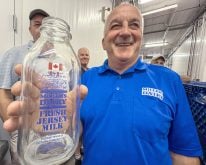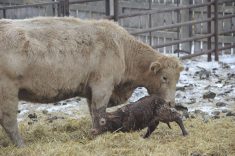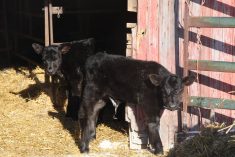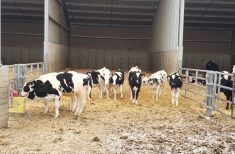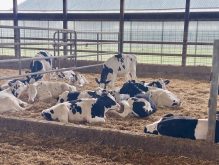A recent study shows that dairy farms are encouraged to feed transition milk to calves following the colostrum feeding.
Transition milk is defined as the second to sixth milking after calving.
“It’s low in IGG (immunoglobulin G) concentrations, but higher in other bioactive molecules like hormones and oligosaccharides and antimicrobials that have other benefits for the calf,” says Amanda Fischer-Tlustos, PhD candidate with the University of Guelph.
Read Also

Jennifer Hayes appointed for second term as the Chairperson of the Canadian Dairy Commission
Jennifer Hayes has been re-appointed as Chairperson of the Canadian Dairy Commission by Heath MacDonald, Minister of Agriculture and Agri-Food.
Why it matters: Understanding milk quality can help to improve calf health.
The study looked at different bioactive compounds in multiparous and primiparous cows, and compared bioactive compounds, such as hormones, oligosaccharides, and proteins in the colostrum and the transition milk, to the same compounds in mature milk.
“We found from a multitude of papers that we published from this study that the levels of these bioactives, in contrast to IGGs, decline at a much slower rate. These bioactive compounds remain high until milking four and don’t go down until levels of less than 10 per cent of their maximum concentration until about milking seven or eight.”
These concentrations are vital in many aspects.
As an example, oligosaccharides are a simple sugar, like a pre-biotic, and help promote a healthy gut.
“There are some hypotheses that certain components of these oligosaccharides, a certain part of it might actually help enhance transfer of passive immunity. They help get that IGG into the intestinal cells of the calf and promote its passive immunity,” Fischer-Tlustos said.
Aside from oligosaccharides, it is difficult to separate the compounds and evaluate each, because there are hundreds of bioactives in colostrum and milk, she adds. But it has been proved that when feeding transition milk, calves have better average daily gain during the pre-weaning period, lower signs of respiratory disease and better health.
“When we feed calves transition milk on farm, there is a benefit to their overall health even though we might not know which specific compound is causing this benefit.”
Although about 75 per cent of producers in Ontario are feeding transition milk, it’s not certain whether the full benefit of the practice is completely understood.
“I was speaking with a farmer on the phone last week. He thought that by feeding transition milk he was helping to promote passive transfer, helping that calf establish immunity, but by that point the calf is not absorbing IGGs. That is going to happen mostly in the first six to 12 hours of life.
“Colostrum and transition milk is so much more than IGGs. We know IGG is the most important thing but there are so many other things in there that can have a positive benefit on calf health.”
Fischer-Tlustos and other teams at the University of Guelph are looking at doing further research to learn more about the compounds of transition milk and how they could improve newborn calf welfare.
She is now working on a study isolating oligosaccharides from colostrum and feeding a control and treated product to calves.
“Basically, what we want to do with newborn calves is feed them a control, just regular colostrum, with an average amount of oligosaccharides in it, while feeding an oligosaccharide supplement colostrum, where they will have three times the oligosaccharides being supplied in that colostrum meal.”
The study is looking to outline the effects of giving calves an average amount of oligosaccharides, versus “bumping it up”.
“Is it what is influencing the gut development? Is it what is helping with passive transfer? Right now, no one has done anything on this at the calf level.”




